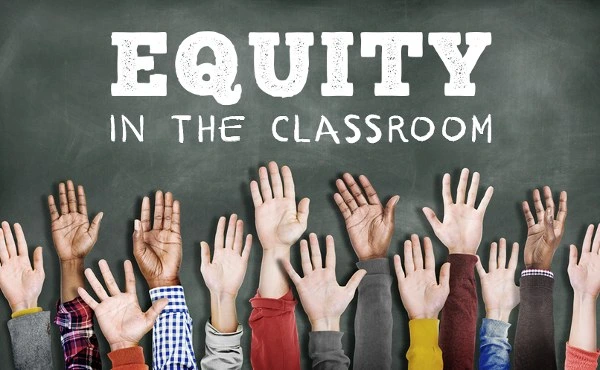
What is Equity in Education?
Equity in education means ensuring that every student, whatever their background, has access to the resources and support they require to achieve. Unlike equality, which treats all kids the same, equity accepts that some students meet more difficult challenges and require different levels of assistance. Promoting equality in the classroom is important for creating an inclusive atmosphere in which all kids can succeed.
Educators and administrators are increasingly recognizing the value of equity in the classroom. According to research, when students feel appreciated and encouraged, they do better in school and have better social and emotional well-being. In this article, we look at the nine most effective approaches to promote equity in the classroom, motivating teachers to provide a more equitable educational experience for all students.
Why Equity in the Classroom is Important?
Systemic challenges often limit disadvantaged students access to opportunities. Race, social position, and disability all contribute to major success gaps. For example, students from low-income families may not have access to the same resources—such as tutoring or extracurricular activities—that their wealthy friends do.
The difference creates unequal educational outcomes and supports social injustices. However, promoting equity in the classroom helps to close these gaps. Research consistently reveals that fair education improves academic performance while also preparing students for a diverse workforce and society. When schools accept equity, they create a sense of belonging and enable all students to reach their full potential.
8 Meaningful Strategies to Promote Equity in the Classroom
Here are eight effective strategies to promote equity in the classroom:
1.Start with Yourself
Increasing self-awareness is the first step toward promoting equity. Consider your conventions, opinions, and assumptions about students from different backgrounds. Consider how these prejudices may affect your relationships and expectations in the classroom. Take advantage of professional development opportunities that focus on inclusion, equity, and diversity to increase your knowledge and skills. You may assist your students learn in a more equal environment by recognizing and resolving your own beliefs.
2.Model Equity for Your Students
As a teacher, you set the tone for your classroom. Set an example of justice, sympathy, and respect for all students. Be intentional in creating a positive learning environment in which all children feel respected and supported. In your interactions, be inclusive and thoughtful in allocating your attention and resources. When you practice equity, you provide a great example for your children to follow.
3.Be Flexible with Online Learning
The transition to online education brought attention to already present educational gaps. To promote fairness in a virtual setting, modify your teaching practices and standards. Ensure that your teachings are adaptable and accessible to all learning styles and abilities. Give students multiple opportunity to interact with the topic and show their comprehension. Ensure that every student has access to the resources and assistance they require, and offer options for those who may face problems.
4.Address Inappropriate Remarks
Addressing incorrect words and acts in a timely and efficient manner is critical for maintaining an equal classroom. Establish clear norms for polite language and engage to correct uncomfortable or unfair comments as needed. Make sure your comments are respectful yet firm, creating a secure environment for open debate and learning. Take advantage of these opportunities to teach children the importance of inclusion and diversity in the classroom.
5.Create an Equitable Classroom Environment
Beyond simply having enough space, a classroom can be equitable. Organize your environment such that each student feels welcomed and included. Set up sitting and study places to encourage collaboration and guarantee that all opinions are heard. Present a range of resources and materials that reflect your students' experiences and backgrounds. Create a respectful, encouraging environment in which all children feel valued and participated.
6.Accommodate Different Learning Styles
Students needs and learning styles varied. Differentiate your guidance to account for the differences and attain equity. To reach every kid, use a variety of educational styles and tools. Provide additional assistance and resources to children who need them, as well as extracurricular activities for top achievers. You can ensure that every kid has the opportunity to succeed by addressing their specific needs.
7.Examine Your Teaching Materials
Evaluate your teaching resources to ensure that they are inclusive and represent a variety of perspectives. Avoid resources that reinforce prejudices or marginalize specific communities. To build a sense of belonging, use resources that highlight other cultures, identities, and perspectives. Include readings, pictures, and exercises that reflect the diversity of your students and the larger community. This creates a more inclusive learning environment and allows students to see themselves represented in the curriculum.
8.Give Students a Voice
Giving children a voice in their schooling is a crucial aspect of equity. Allow youngsters to share their thoughts, opinions, and experiences. Encourage open discourse so that students feel comfortable sharing their ideas and perspectives. Give kids opportunities to express themselves, and encourage student-led talks and initiatives. You may make your classroom more inclusive and responsive by valuing and utilizing student feedback.
Conclusion
Promoting equity in the classroom is more than a goal; it is essential for creating an inclusive and supportive educational environment. By applying the eight tactics presented in this article, educators may make significant progress toward ensuring that every kid has the opportunity to succeed.
When schools accept equity, they create a sense of place and allow all children to reach their full potential. Integrating a school management system can also streamline efforts, ensuring resources and support are distributed equitably. Educators have the ability to make a difference in their classrooms and beyond. Let us commit to supporting equity and building a better future for all students. If you want to built a strong classroom community, check out our blog 8 Ways To Build Strong Classroom Community